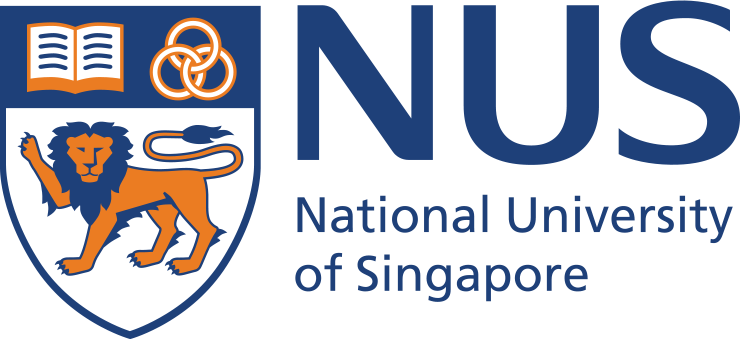RESEARCH IMPACT & COLLABORATIONS
DayOne signs ‘Anchor Partner’ agreement with STDCT
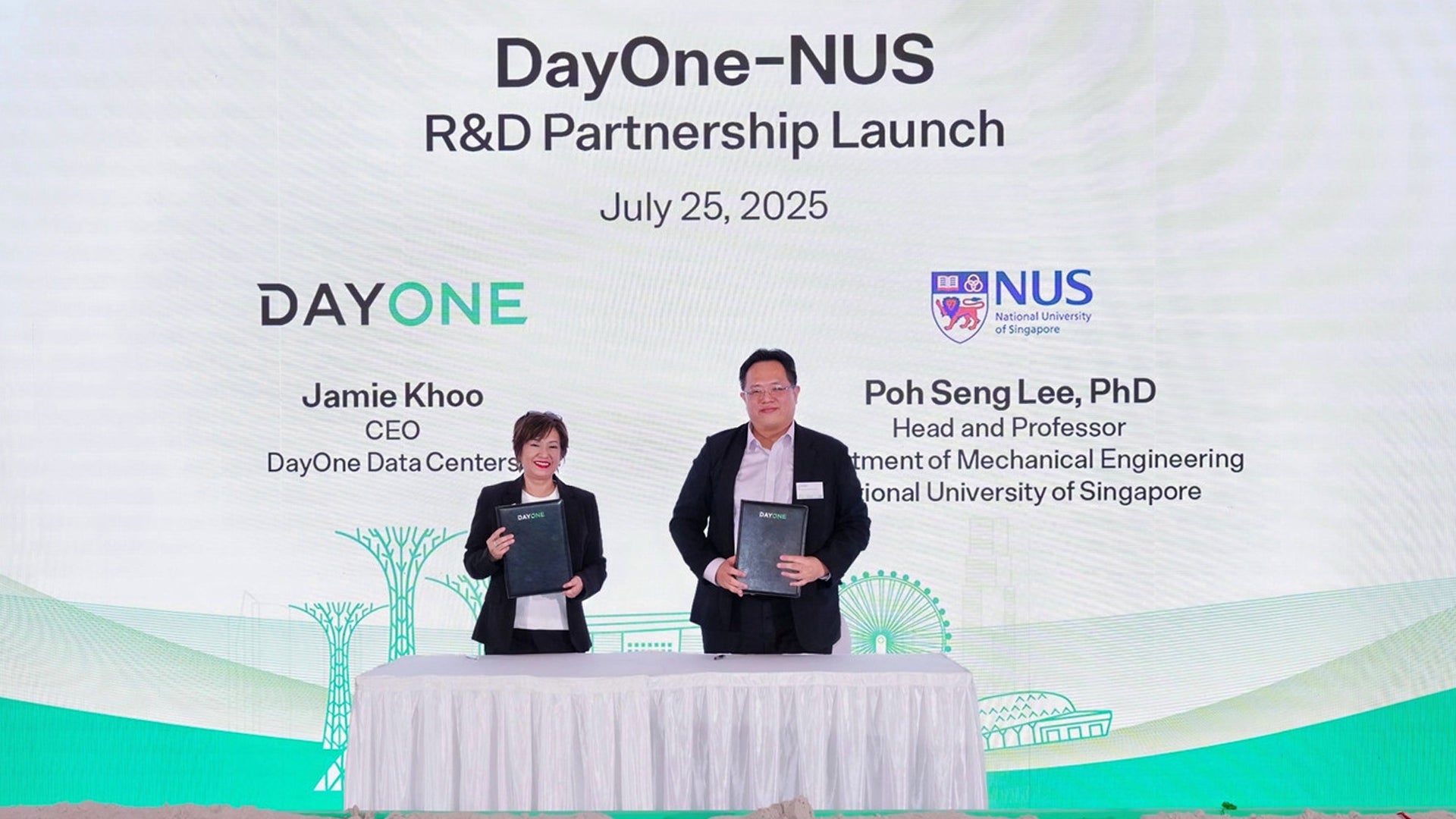
“Through the Sustainable Tropical Data Centre Testbed 2.0, we are field testing breakthroughs - from flexible-fuel generators and fuel cells to next-generation liquid cooling - to demonstrate that sustainability and high performance can go hand in hand.”
The Sustainable Tropical Data Centre Testbed (STDCT) hosted at CDE has signed an agreement with DayOne to develop next-generation sustainable data centre technologies.
The formalisation of the partnership marks the launch of Phase 2 of the Sustainable Tropical Data Centre Testbed (STDCT) — a multi-stakeholder initiative with DayOne joining as a founding Anchor Partner.
The agreement was signed by Professor Lee Poh Seng, Director of the STDCT, on 25 July at the groundbreaking of DayOne’s new hyperscale facility in western Singapore. Prof Lee is also Head of Mechanical Engineering, CDE.
Read more here.
SHINE signs research collaboration with NSTIC (GaN)
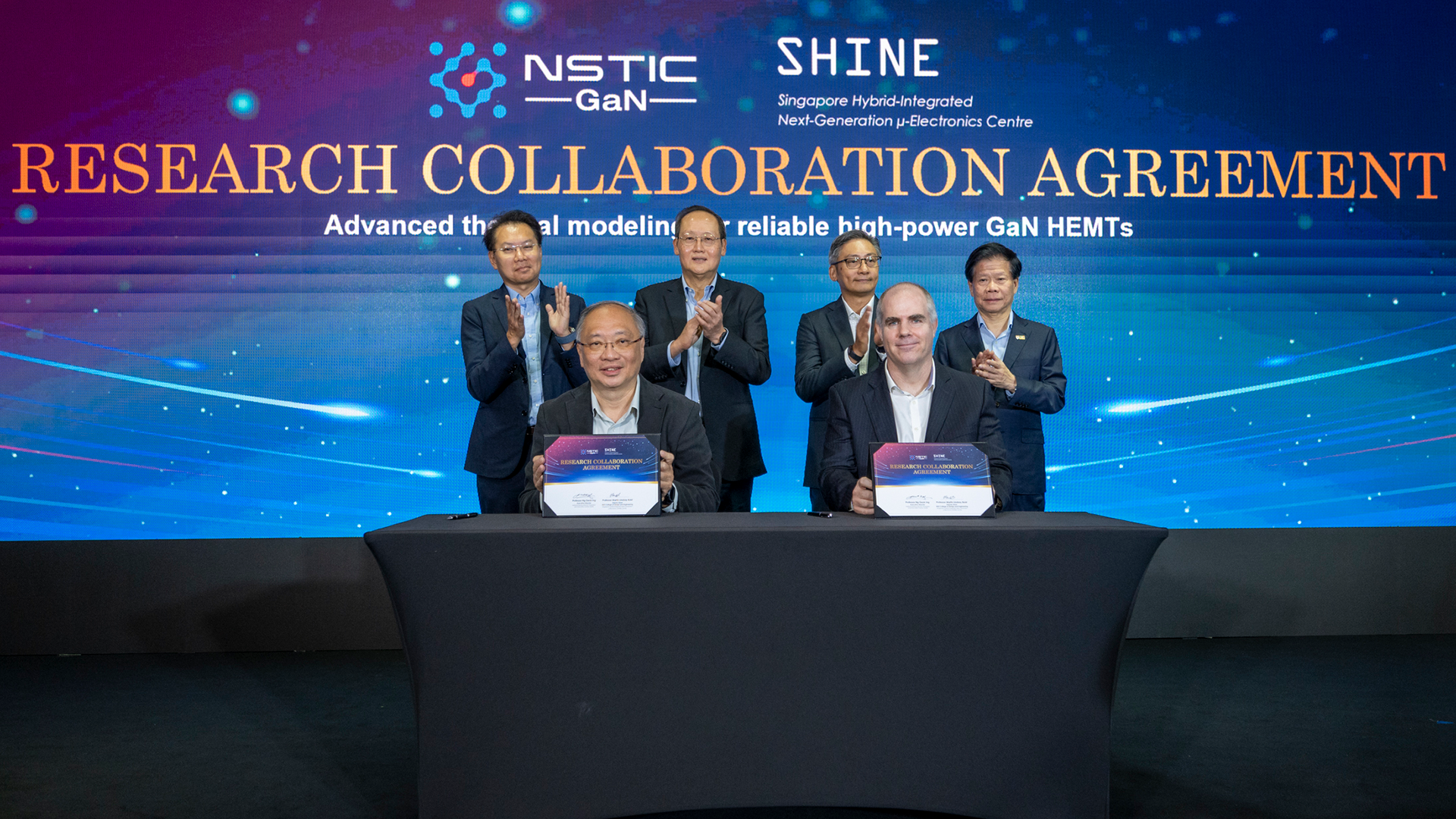
The Singapore Hybrid-Integrated Next-Generation µ-Electronics Centre (SHINE) centre at CDE has signed a research collaboration with Singapore’s new National Semiconductor Translation and Innovation Centre for Gallium Nitride - NSTIC (GaN) to advance next-gen semiconductor technologies.
The collaboration agreement was signed by Associate Professor Martin Buist, Vice Dean of CDE, representing CDE and SHINE at the official opening ceremony of NSTIC (GaN) on 26 June 2025.
The project will develop better ways to manage heat in high-power GaN devices used in 5G, radar and satellite systems, improving reliability and performance.
“Together, these initiatives represent a deepening and maturing collaboration - one that not only pushes technical boundaries, but also grows Singapore’s leadership in hybrid and compound semiconductor innovation,” said Professor Yeow Kheng Lim, Programme Director at SHINE and Professor of Electrical and Computer Engineering at CDE, speaking at the opening ceremony.
Established in 2021, SHINE is a research and development centre hosted by CDE that focuses on developing next-generation hybrid-integrated (flexible and rigid) microelectronics to support national goals in computing, sensing and communications.
Read more here.
When stem cells feel the squeeze, they start building bone

“Most people think of stem cell fate as being determined by chemical signals. What our study shows is that physical confinement alone - squeezing through tight spaces - can also be a powerful trigger for differentiation.”
In a discovery that could reshape approaches to regenerative medicine and bone repair, new research reveals how mechanical forces, not just chemicals, can steer stem cells toward becoming bone cells.
The study, led by Assistant Professor Andrew Holle (Department of Biomedical Engineering and NUS Mechanobiology Institute), with first author of the paper, PhD student Xu Gao, could help improve therapies and materials used in regenerative medicine. Asst Prof Holle leads the Confinement Mechanobiology Lab at NUS which studies how physical constraints affect how cells behave, function, and develop.
The discovery highlights the powerful influence of mechanical cues, alongside chemical ones, in shaping how stem cells behave and what they become.
“By tuning the mechanical properties of materials, we might be able to steer stem cells more reliably toward the cell types we want,” said Asst Prof Holle.
Read more here.
Bioengineered tumour model offers new tool in fight against peritoneal cancers

“Our goal was to develop a platform that better reflects the complexity of human tumours so we can evaluate drugs more reliably and tailor treatments to individual patients.”
A new hydrogel model that keeps live tumour tissue intact for over 12 days could transform how cancer treatments are tested, especially for aggressive abdominal/pelvic cancers with few treatment options.
The breakthrough is the result of research led by Assistant Professor Eliza Fong (Department of Biomedical Engineering) and Associate Professor Johnny Ong from the Singapore General Hospital and National Cancer Centre Singapore.
The specially engineered hydrogel is designed to better reflect real patient conditions to enable more accurate drug screening and a clearer understanding of how different tumours respond to treatment. The researchers say it holds strong potential for accelerating personalised therapy development for peritoneal metastases, a particularly deadly form of abdominal cancer.
Read more here.
Catalyst cuts energy use in CO₂-to-ethylene conversion
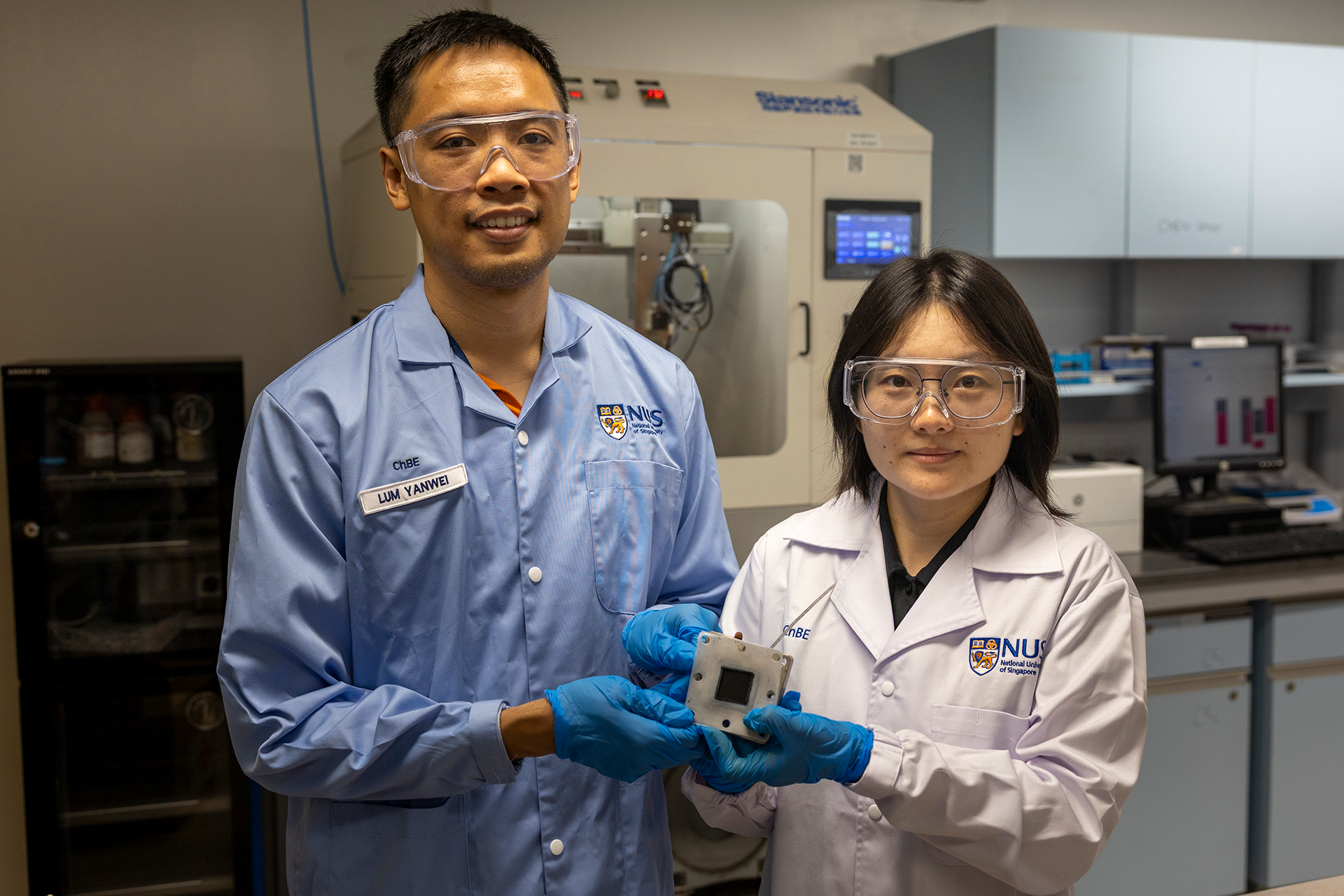
A new catalyst developed by researchers at CDE makes it far more energy-efficient to convert carbon dioxide (CO₂) into ethylene, a major industrial chemical used in plastics, packaging, and textiles.
The research, led by Asst Prof Lum Yanwei (Chemical and Biomolecular Enginering), offers a promising route to decarbonising one of the chemical industry’s most emissions-intensive processes.
Most ethylene today is produced through steam cracking of fossil fuels, a process that consumes large amounts of energy and emits significant CO₂.
The new catalyst, modified with cobalt, alters the reaction pathway in a way that favours ethylene production and reduces energy consumption. It also performed well using low-purity CO₂, such as that found in industrial flue gas, and remained stable over long-term testing.
Read more here.
Self-powered sensor offers fast, sustainable water monitoring
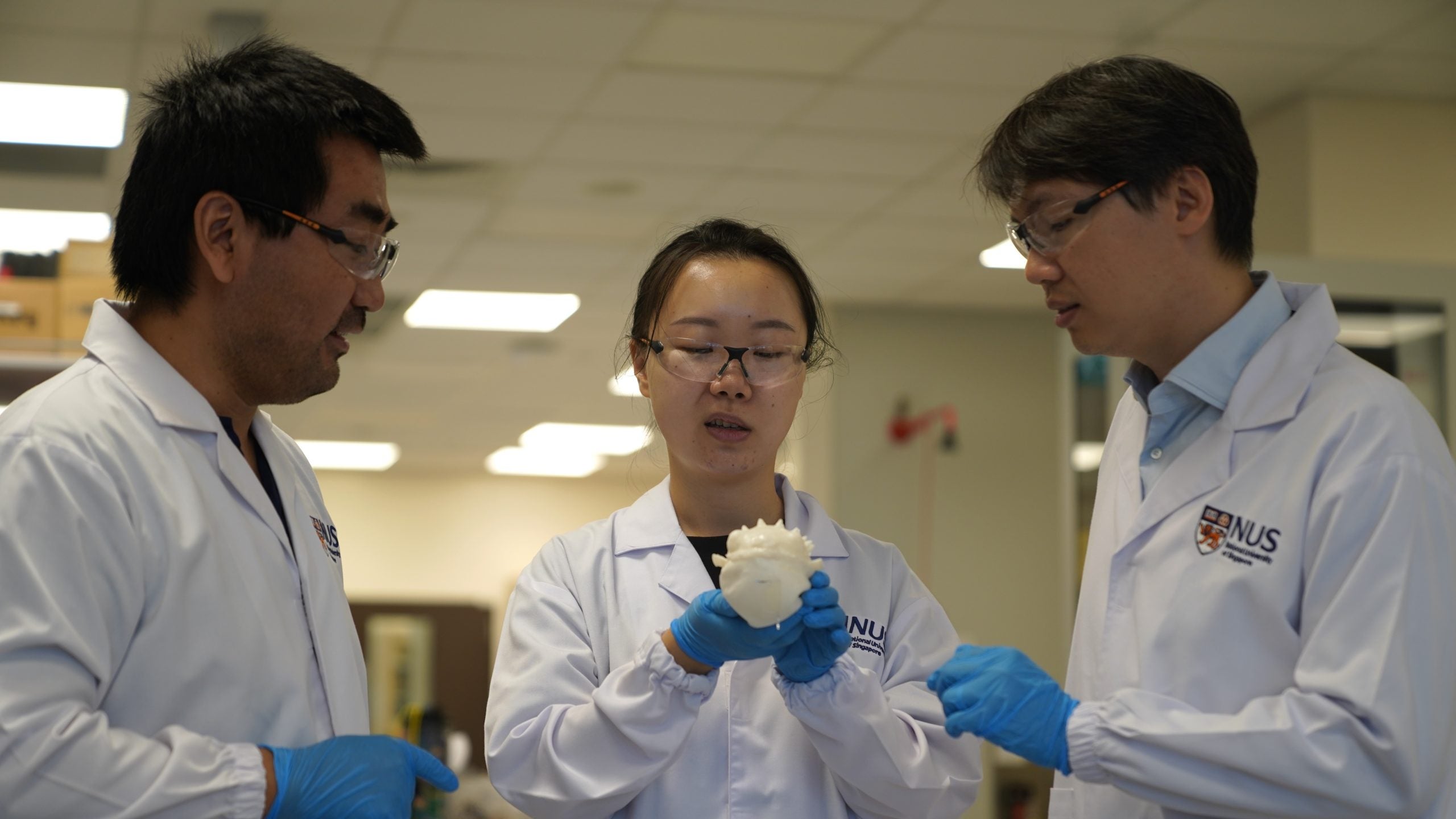
Clean water is vital for health, food security, and sustainable cities. But detecting contamination quickly and reliably is a challenge.
A team led by Associate Professor Benjamin Tee (Materials Science and Engineering) has developed a game-changing solution: a self-powered, self-healing sensor inspired by the water-repellent layer on human skin named ReSURF. The research team included Research Fellows Liu Mengmeng, Yu Kelu and Guo Hongchen.
The ReSURF sensor detects pollutants like oils and fluorinated compounds in just milliseconds, without the need for external power or reagents.
“This capability, together with unique features such as self-powered, self-healing, reusability and recyclability, positions ReSURF as a sustainable solution for real-time, on-site, and sustainable water quality monitoring,” said Assoc Prof Tee.
Made from a recyclable material, the sensor is stretchable, transparent, and can be integrated into soft robotics and wearable electronics, opening the door to low-maintenance, portable, and eco-friendly water monitoring in everyday environments.
Read more here.
Crumpled graphene membranes set benchmark for hydrogen purification and carbon capture
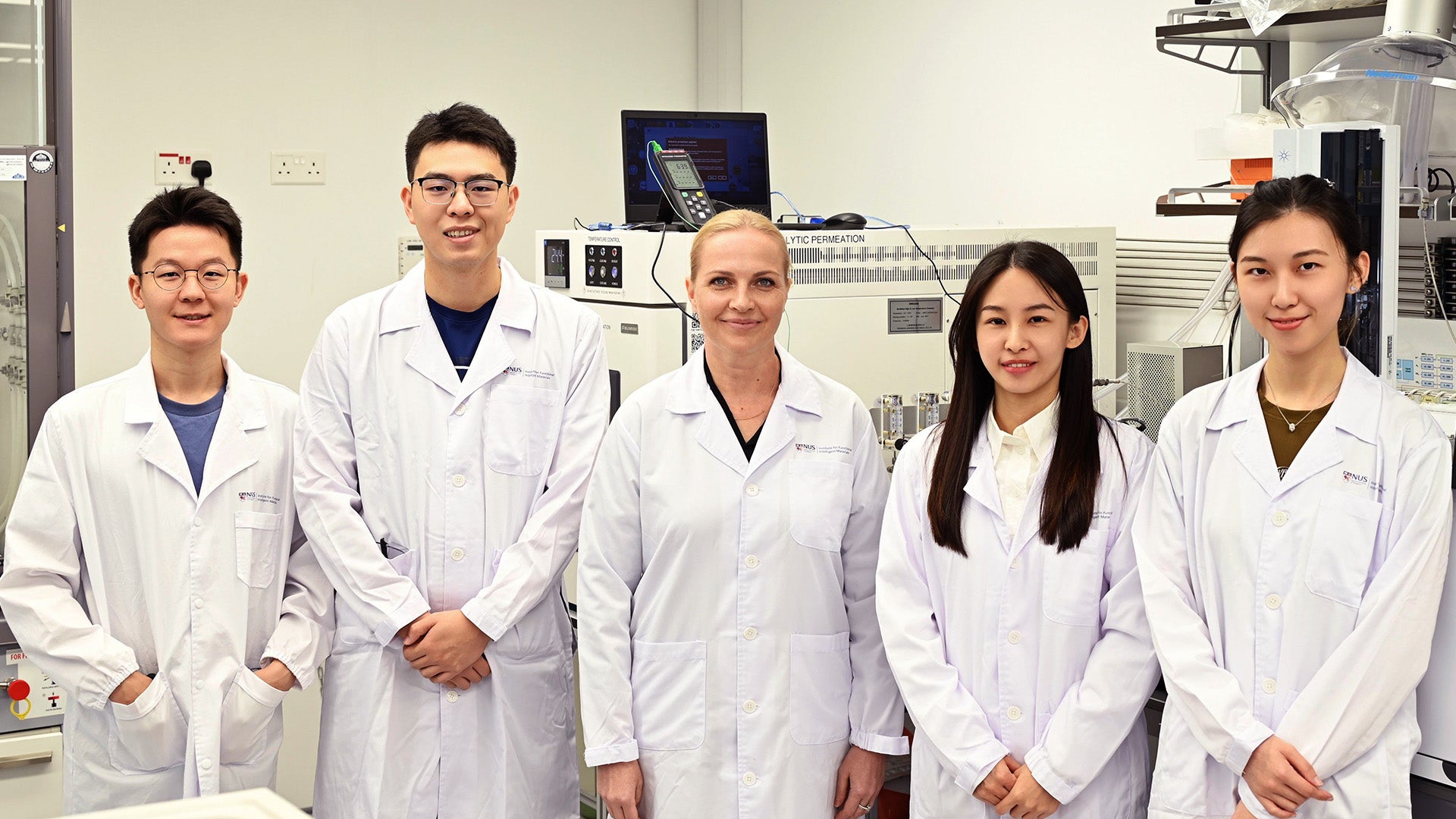
A new membrane technology developed by researchers at CDE overcomes a long-standing trade-off in gas separation, offering improved performance in hydrogen purification and carbon capture.
Membrane-based separation is an essential process in clean energy and environmental applications. However, conventional membranes often face a critical performance limitation: increasing permeability (the speed at which gas passes through) usually results in reduced selectivity (the membrane’s ability to separate different gases), and vice versa.
This trade-off has restricted the efficiency of gas separation processes in industrial settings.
To overcome this, a team of researchers from the Institute for Functional Intelligent Materials (I-FIM) and the Department of Materials Science and Engineering, led by Associate Professor Daria V. Andreeva, developed a new class of crumpled graphene oxide (cGO) membranes that achieve both high permeability and high selectivity. Their findings, published on 14 July 2025 in Nature Nanotechnology, mark a significant advance in the field.
Graphene oxide (GO) membranes are made of stacked layers that create nanochannels through which gases can travel. While these channels can be fine-tuned, the closely packed layers in conventional GO membranes tend to restrict gas flow, limiting their overall performance.
As a way around this, the research team introduced controlled crumpling into the structure of the GO membranes. By heating polystyrene substrates underneath the GO films, they triggered thermal shrinkage, which in turn caused the membranes to wrinkle. This generated a multidomain, crumpled morphology with spatially varied nanochannels.
Read more here.
Major Grants Awarded
The major grants (start date in July 2025) with total project value > $1M.
| Hosting Unit | Project Title | Funding Programme (Source of Funding) |
Principal Investigator |
| DOA | Modelling of greenery solutions for UHI mitigation | National Parks Board (NPARKS) | Yuan Chao |
| CEE | NUS-Woh Hup research collaboration | Woh Hup Pte Ltd | Pang Sze Dai |
| ChBE | Research collaboration on the use of Metal-Organic Frameworks (MOFS) against chemical agent simulants | DSO National Laboratories | Zhao Dan |
| BME | Development of a living biobank of cancer organoids incorporating cancer-associated fibroblast heterogeneity for drug testing | ACRF tier 2 grant – 2025 / Ministry of Education (MOE) | Fong Li Shan Eliza |
| MSE | High-performance ionic thermoelectric materials for waste heat harvesting | ACRF tier 2 grant – 2025 / Ministry of Education (MOE) | Ouyang Jianyong |

